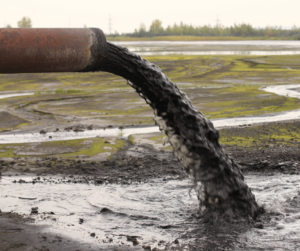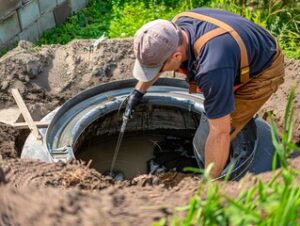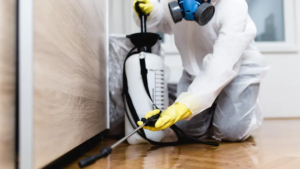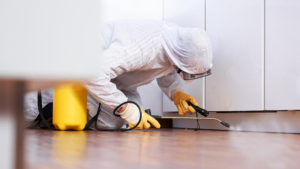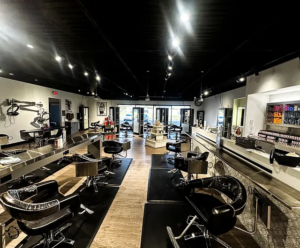Pest Control involves preventing and reducing pests that damage plants, animals, buildings, or structures. It uses an ecosystem approach to manage pests using a combination of techniques.
Prevention includes removing food, water, and shelter from around homes and keeping doors and windows closed. Stacks of firewood should be kept away from the house, and garbage cans should be tightly sealed with a lid and removed regularly. Click the https://killianpestcontrol.com/ to learn more.
Pests aren’t just unwelcome guests; they carry germs that threaten our health and can cause damage to the property. The best way to protect against them is to keep them away from the home, but this requires proactive pest control measures. Prevention can include everything from regular pest inspections to installing screens and sealing cracks.
Prevention is often the most cost effective and least risky method of pest control. The goal is to stop pests before they become a problem by keeping them from accessing the food, water and shelter they need. This includes removing all potential pathways that pests might use to enter, such as removing overgrown vegetation around the house, storing garbage tightly in sealed containers and removing it regularly, fixing leaky plumbing, and not leaving pet foods or water out overnight.
Many pests can be controlled by introducing natural enemies into the environment to compete with them for resources or suppress their populations. This can include birds, reptiles, amphibians, fish, insects and other pests, as well as parasitic organisms such as nematodes, wasps, flies, fungus gnats and mites.
Other methods include the use of physical barriers, such as sealants and screens, to keep pests out, as well as traps and other devices to catch or kill them. Biological controls, such as the release of sterile pests, pathogens or hormones, can also be used to reduce pest numbers.
The best preventive measure is to perform a thorough pest inspection at least twice a year, in spring and fall. These inspections can reveal potential pest infestations and allow for early intervention before they can do significant damage.
In commercial settings, especially restaurants and retail stores, preventive pest control is even more critical. Pests are the last thing customers want to see and can be a major turnoff for business, so keeping them away is essential. Proper cleaning and routine inspections, along with the right type of pest repellant defenses, can ensure that your business is a welcoming place for your customers. Regular pest inspections and preventive measures will help you avoid costly repairs and keep your property value high.
Suppression
A primary goal of pest control is to reduce the number of pests to a level where they no longer cause unacceptable harm. This may involve monitoring to determine when the population has reached or exceeded a threshold. Monitoring generally involves counting or weighing, visual inspection, and trapping. In some cases, biological or physical controls can be used to prevent the pest from reaching a critical mass.
Some pests can be controlled naturally, with the help of predators, parasites, and pathogens. These organisms kill or control their host organisms, which reduces the pest population. Physical controls, such as traps and screens, can prevent pests from entering or spreading. Altering the environment, such as using mulches for weed control or steam sterilization of soil for disease management, also can prevent pests from causing damage.
Chemicals, both natural and synthetic, are commonly used as pest controls. Most pesticides have labels with specific instructions and warnings, so care must be taken to ensure that they are used correctly. Some pesticides are odorless, making them effective in controlling some pests without disturbing indoor air quality. Others are toxic or harmful to people and pets, and therefore require careful handling and application.
In food processing environments, pests are a problem because they can spoil products or cause other forms of contamination. This can result from direct physical damage to the product or its packaging, contaminating the food with rodent droppings or insect parts, and transmitting disease-causing agents, such as intestinal worms or microbial pathogens. In addition, pests can interfere with production and/or packaging processes, as well as pose a threat to the health and safety of employees.
For these reasons, preventive pest control measures are the most important in food processing environments. However, when this is not possible, suppression and eradication goals should be established. Eradication is a rare goal in outdoor situations, but is an important objective in enclosed areas such as dwellings; schools; office buildings; hospitals, food processing plants, and food preparation facilities; and health care and public utility structures. For example, a zero tolerance policy for the presence of bacteria in operating rooms and other sterile areas in health care facilities would be considered an eradication goal.
Detection
A pest control technician’s work is only successful if they can detect pest activity and find the best way to treat an infestation. However, it isn’t uncommon for people to miss telltale signs of pests, especially those that are small or hidden. A common mistake is to assume that a pesticide application failed because the pest became resistant. In reality, the pesticide may not have been applied correctly or at the right time – or the pest may be in a life cycle stage or location where it isn’t susceptible to the chemical.
In addition to scouting, monitoring and trapping, there are several other methods for detecting pests. For example, an infrared (IR) camera can locate pests by identifying surface-level infrared radiation. All objects emit heat, including living organisms such as insects and rodents. In a house, an IR camera can allow a pest-control specialist to see behind walls and under floorboards without breaking into the property or damaging it. Similarly, an IR camera can detect hot spots that indicate the presence of a nest.
Another form of detection is biological pest control, which introduces natural enemies that attack or compete with the targeted pests. For example, ladybugs are a popular choice for gardens and greenhouses because they eat aphids, while beneficial nematodes eat lawn pests such as grubs. Incoming commercial and private shipments of plants and plant material are also routinely inspected for compliance with quarantine regulations in order to prevent exotic pests from entering the country.
Many pest problems can be solved through early detection and scouting. In addition, mechanical and physical controls can be used to ward off infestations. For example, putting up screens, trapping pests in bait stations or using netting and barriers are all effective ways to keep pests out of crops and properties. The use of heat, radiation, light and electricity can also be used to alter environments and prevent pests from breeding. For example, reducing the amount of moisture in the soil can prevent fungi that attract certain pests. The use of odors can also discourage some pests, such as rodents, from exploring an area.
Eradication
Ultimately, the goal of pest control is to cause as little harm as possible to humans, plants, animals, and the environment. This goal is often best accomplished through prevention and suppression. In outdoor situations, eradication is rarely a goal; it is more common in enclosed environments such as indoor food processing and storage areas.
Eradication requires a complete understanding of the ecological systems that govern microbes and their human, insect, or vertebrate hosts. In addition to a highly variable reproductive rate (R), these systems depend on local environmental conditions, especially temperature and humidity, and are affected by the presence of other organisms in the area that influence R (such as predators or parasites). Eradication is only feasible when the overall ecological system can be brought into balance.
The best way to achieve this balance is through the use of integrated pest management strategies, which include cultivation practices that discourage infestation and reproduction, crop varieties that resist damage by a particular pest, biological controls such as insects or diseases that prey on or parasitize the pest, and monitoring for signs that a problem is arising so that action can be taken when necessary. These techniques can reduce the need for chemical sprays, which often have negative effects on human health and the environment.
Another critical element in a successful pest control program is accurate identification of the pests involved. Without this step, control efforts will be ineffective and costly.
Identifying pests can be a complex task, but is essential for the development of effective pest management programs. Scouting is important to help determine the types of pests and their population levels, as well as determining economic or aesthetic injury thresholds.
Pest infestation curves are often used to help decide which control strategies are most appropriate. The farther a pest moves from left to right on the curve, the more difficult it is to eradicate. In general, it is cheaper and more effective to control a pest when it is a small or isolated population rather than when it has already become widespread.
It is also important that any eradication program be planned for the long term, because removing a pest may take more than one generation to accomplish. The success of an eradication program will depend on the adequacy of financial resources at local, national, and international levels and on a wide range of logistical factors.
